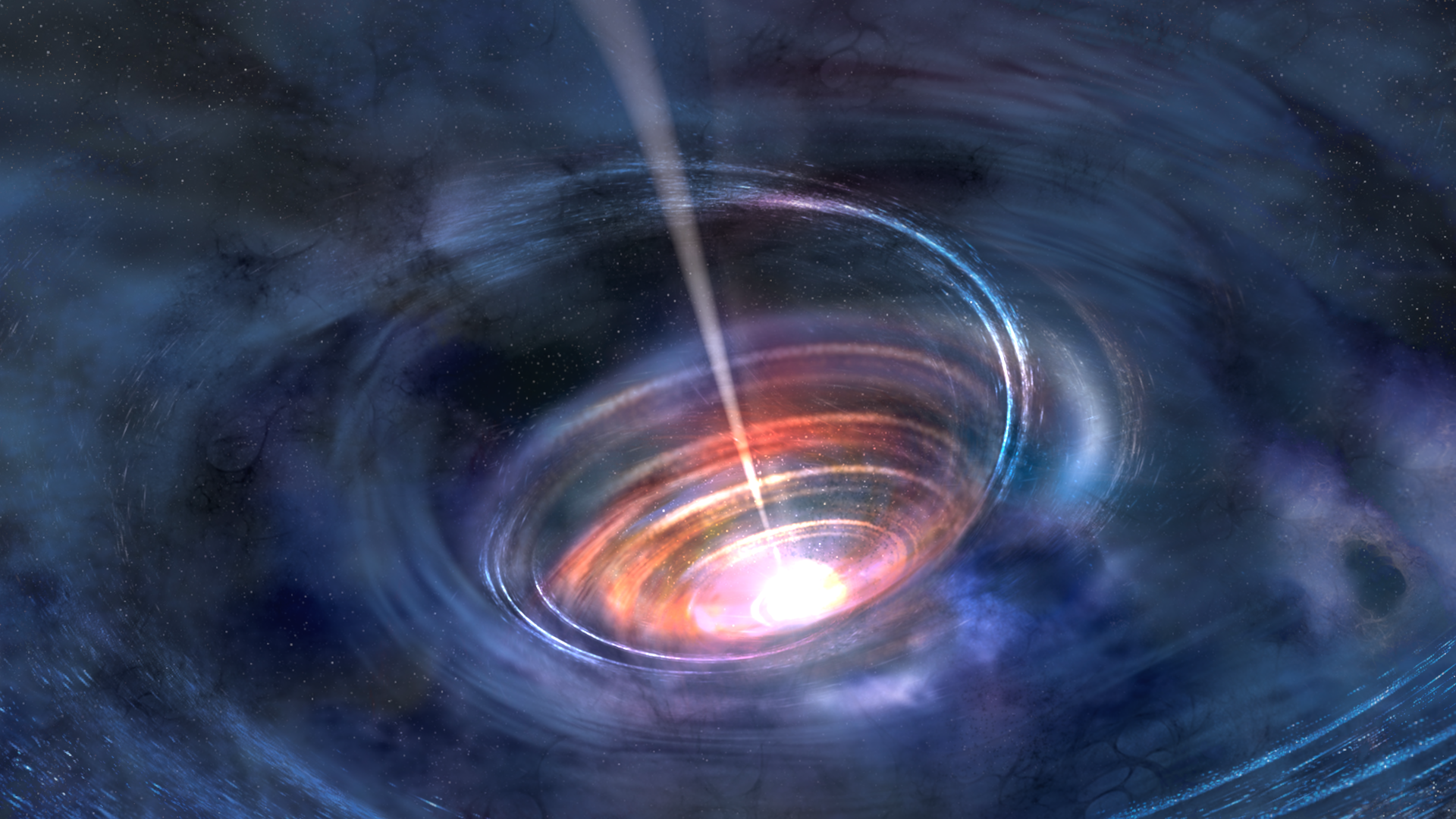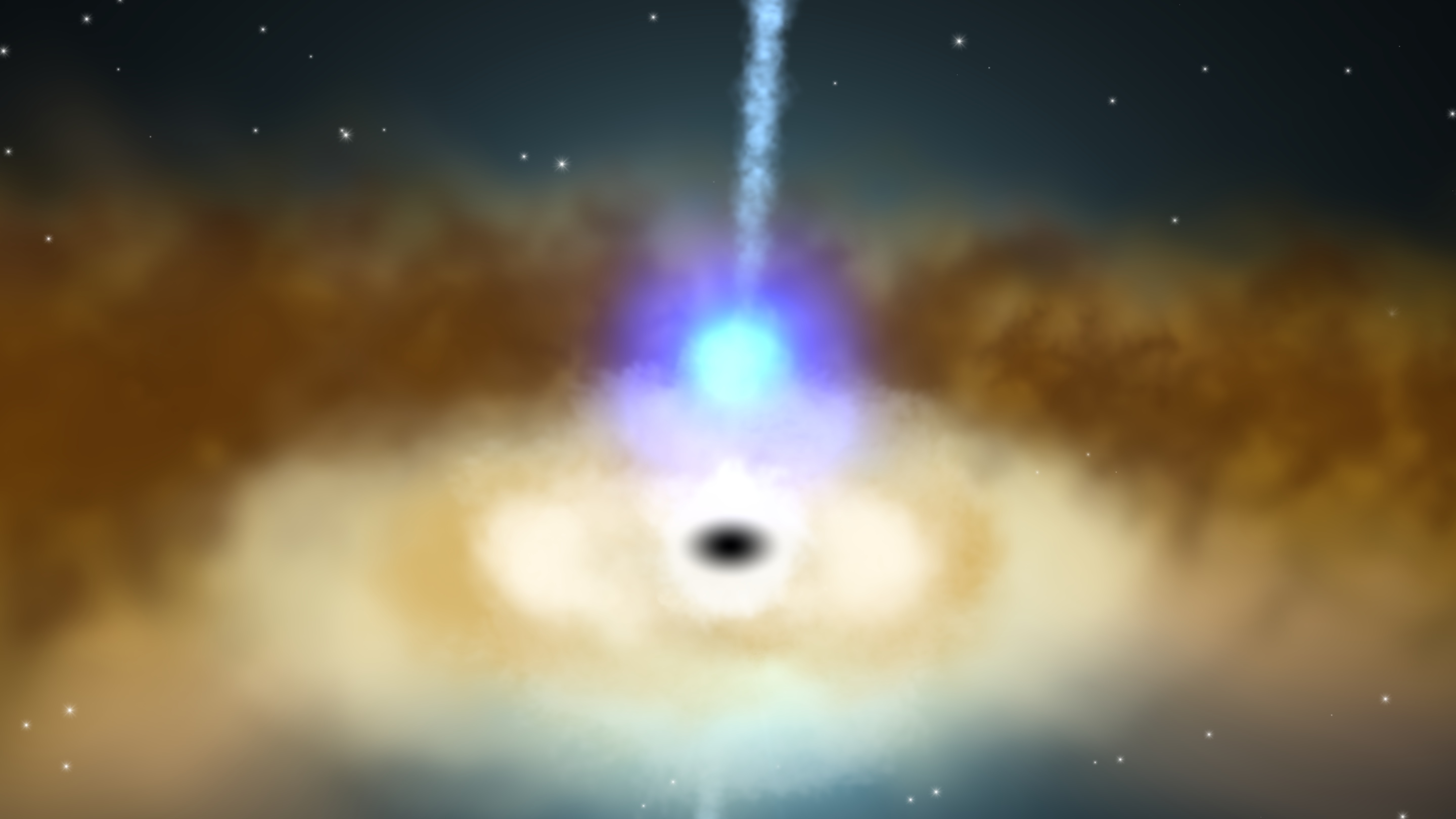NICER Charts the Area Around a New Black Hole
Watch how X-ray echoes, mapped by NASA’s Neutron star Interior Composition Explorer (NICER) revealed changes to the corona of black hole MAXI J1820+070.
Credit: NASA’s Goddard Space Flight Center
Music: "Superluminal" from Killer Tracks
Complete transcript available.
Scientists have mapped the environment surrounding a black hole that is 10 times the mass of the Sun using NASA’s Neutron star Interior Composition Explorer (NICER) payload aboard the International Space Station. NICER detected X-ray light from a recently discovered black hole, called MAXI J1820+070 (J1820 for short), as it consumed material from a companion star. Waves of X-rays formed "light echoes" that reflected off the swirling gas near the black hole and revealed changes in the environment’s size and shape.
A black hole can siphon gas from a nearby star and into a ring of material called an accretion disk that glows in X-rays. Above this disk is the corona, a region of subatomic particles that glows in higher-energy X-rays.
Astrophysicists want to better understand how the inner edge of the accretion disk and the corona change in size and shape as a black hole accretes material from its companion star. If they can understand how and why these changes occur in stellar-mass black holes over a period of weeks, they could shed light on how supermassive black holes evolve over millions of years and how they affect the galaxies in which they reside.
One method used to chart those changes is called X-ray reverberation mapping, which uses X-ray reflections in much the same way sonar uses sound waves to map undersea terrain.
From 10,000 light-years away, the scientists estimated that the corona contracted vertically from roughly 100 to 10 miles — that’s like seeing something the size of a blueberry shrink to something the size of a poppy seed at the distance of Pluto.
X-ray light echoes reveal changes to the accretion disk and corona of a black hole in this animation. Over time, the echoes get closer and closer together, indicating that the corona is compacting.
Credit: NASA’s Goddard Space Flight Center

In this illustration of a newly discovered black hole named MAXI J1820+070, a black hole pulls material off a neighboring star and into an accretion disk. Above the disk is a region of subatomic particles called the corona.
Credit: Aurore Simonnet and NASA’s Goddard Space Flight Center
An animated version of the illustration above.
Credit: Aurore Simonnet and NASA’s Goddard Space Flight Center

The NICER instrument installed on the International Space Station, as captured by a high-definition external camera on Oct. 22, 2018.
Credit: NASA

The Neil Gehrels Swift Observatory took this image of MAXI J1820+070 on March 11, 2018, using its X-Ray Telescope.
Credit: NASA/Swift

Animated GIF showing waves of X-rays from the corona echoing off the accretion disk like the sonar we use to explore the ocean floor. These echoes tell us about the size and shape of the disk and corona.
Credit: NASA's Goddard Space Flight Center

Animated GIF showing the anatomy of MAXI J1820+070.
Credit: NASA's Goddard Space Flight Center

Animated GIF illustrating how iron atoms in the disk absorb X-rays from the corona and then re-emit them. Gravitational distortion of space-time stretches the wavelengths of the X-rays, reducing their energy. The farther from the black hole they are, the less the light is affected.
Credit: NASA's Goddard Space Flight Center
For More Information
Credits
Please give credit for this item to:
NASA's Goddard Space Flight Center. However, individual items should be credited as indicated above.
-
Producer
- Scott Wiessinger (USRA)
-
Science writer
- Jeanette Kazmierczak (University of Maryland College Park)
-
Animator
- Scott Wiessinger (USRA)
-
Scientist
- Erin Kara (UMD)
-
Narrator
- Erin Kara (UMD)
-
Illustrator
- Aurore Simonnet (Sonoma State University)
Release date
This page was originally published on Wednesday, January 30, 2019.
This page was last updated on Wednesday, May 3, 2023 at 1:46 PM EDT.


